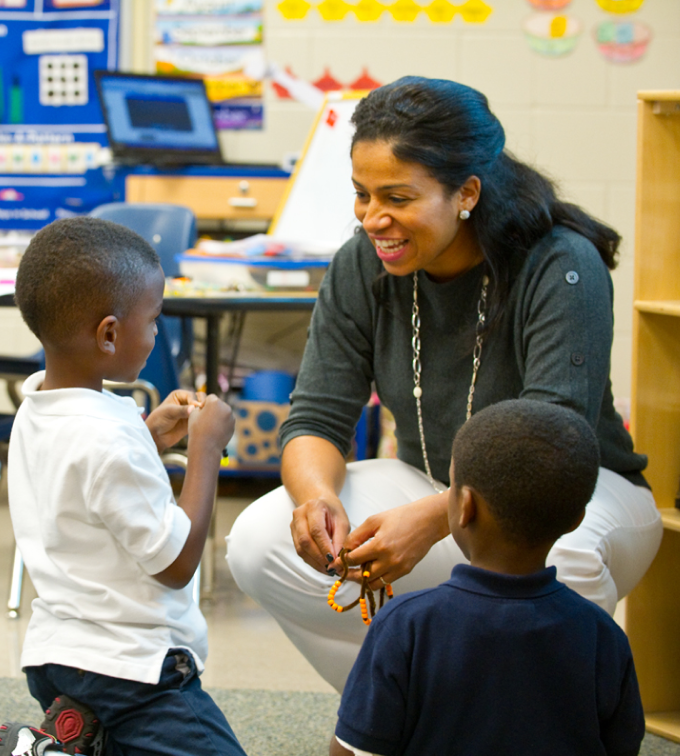Personalized Primary Science Tuition Singapore to Cater to Your Child’s Needs
Exploring the Various Teaching Strategies in Primary Scientific Research Education And Learning Today
The landscape of primary scientific research education and learning is developing, with different teaching techniques obtaining prestige in modern class. Inquiry-based learning, hands-on experiments, and the combination of modern technology are redefining exactly how instructors engage young minds. Furthermore, joint methods and set apart direction are being utilized to deal with the varied requirements of students, boosting both involvement and understanding. As we check out these methodologies, inquiries develop about their effectiveness and the effects for future academic techniques. What might these shifts in approach mean for the future generation of learners?
Inquiry-Based Knowing
Inquiry-Based Understanding (IBL) is a pedagogical approach that encourages trainees to discover scientific principles with doubting, examination, and hands-on testing. This technique emphasizes the function of pupils as active participants in their discovering, promoting critical reasoning and problem-solving skills. By involving with real-world inquiries, students become curious and motivated, which boosts their understanding of scientific concepts.
In IBL, educators serve as facilitators, directing pupils as they browse their inquiries as opposed to supplying info directly. This student-centered method enables distinction, suiting numerous learning styles and paces. Trainees establish abilities in creating theories, designing experiments, and analyzing information, which are essential for clinical proficiency.
In addition, IBL cultivates collaboration among trainees, encouraging them to share ideas and findings. This collective questions advertises social skills and a sense of community within the classroom. The procedure of questions urges durability, as pupils learn to embrace failing as a stepping stone towards understanding.
Hands-On Experiments
Hands-on experiments are a vital part of effective scientific research education and learning, complementing the concepts of inquiry-based knowing. These experiments permit trainees to engage directly with clinical ideas, fostering a deeper understanding with experiential discovering. By manipulating products and observing results, young learners can comprehend abstract theories in tangible methods.
Such activities promote critical reasoning and analytical skills, as pupils assume outcomes, conduct experiments, and assess results. This process encourages them to ask questions, refine their understanding, and create a clinical attitude. In addition, hands-on experiments can be tailored to varied understanding styles, ensuring that all students have the opportunity to involve meaningfully with the web content.
Furthermore, hands-on experiments often urge partnership amongst peers, promoting teamwork and interaction abilities. Functioning in teams enables trainees to share concepts, go over searchings for, and pick up from one another, which boosts their overall academic experience.
Integrating hands-on experiments right into the key science curriculum not only enriches the learning environment but likewise cultivates a lifelong rate of interest in scientific research. By proactively participating in their education, trainees are more probable to establish a passion for clinical inquiry that extends past the class.

Innovation Assimilation
Incorporating technology right into primary scientific research education and learning has become increasingly crucial in fostering student involvement and enhancing learning results. Using digital tools, such as interactive simulations, digital labs, and instructional software application, offers pupils with chances to check out clinical concepts in ingenious ways. These sources help with a much deeper understanding of complicated subjects by allowing learners to visualize and adjust variables that would be not practical in a traditional class setting.
Furthermore, modern technology integration motivates customized finding out experiences. Students can progress at their very own speed, revisiting difficult principles via multimedia resources, which accommodate various discovering styles. This adaptability not just sustains private growth however also grows a feeling of autonomy in students.
Additionally, modern technology acts as a bridge to real-world science, linking pupils with present study and professional payments. Access to clinical journals and on the internet databases widens students' viewpoints on scientific query and fosters critical assuming skills.
Collaborative Understanding
Collective learning plays an important role in primary science education and learning by cultivating teamwork and interaction skills amongst trainees. This method motivates learners to work together, share understanding, and participate in analytic, which improves their understanding of scientific ideas. By participating in Go Here group tasks, students find out to articulate their concepts, pay attention to varied perspectives, and negotiate solutions, all of which are vital skills in both real-world and scholastic contexts.

Research shows that collective learning their explanation can cause enhanced inspiration and interaction in scientific research subjects, as pupils discover satisfaction in common experiences (primary science tuition Singapore). Furthermore, this approach prepares trainees for future collaborative ventures, equipping them with the abilities necessary for reliable synergy in college and specialist settings. Inevitably, embracing collective knowing in main scientific research education can considerably enrich the understanding experience and advertise a deeper understanding of scientific query
Separated Instruction

Separated direction can show up in numerous means, such as differing the web content, procedures, or items of discovering. For example, educators might make use of tiered jobs that provide varying levels of complexity, enabling pupils to operate at their corresponding preparedness degrees. Furthermore, versatile organizing methods can facilitate collaboration among trainees with different capacities, fostering peer discovering.
Evaluation plays a crucial role in this approach, as it informs direction and assists teachers recognize each trainee's one-of-a-kind demands. Formative evaluations, such as quizzes and monitorings, can guide instructors in adjusting their approaches to enhance discovering outcomes. primary science tuition Singapore. Eventually, by carrying out separated direction in main science education, teachers can grow a more fair and efficient discovering atmosphere, encouraging all trainees to reach their complete capacity in recognizing clinical sensations
Final Thought
In recap, the varied training methods in main science education, consisting of inquiry-based knowing, hands-on experiments, modern technology combination, joint knowing, and set apart direction, jointly add Clicking Here to a much more efficient discovering atmosphere. These techniques promote important reasoning, problem-solving skills, and a much deeper comprehension of clinical concepts. By executing these methods, instructors can produce appealing and encouraging classrooms that attend to the varied needs of pupils, eventually promoting a long-lasting interest in science and improving academic accomplishment.
Inquiry-Based Understanding (IBL) is a pedagogical approach that encourages students to explore scientific concepts with doubting, examination, and hands-on experimentation.Joint learning plays a crucial function in primary science education and learning by cultivating team effort and communication abilities amongst trainees.Research study indicates that joint understanding can lead to enhanced motivation and interaction in scientific research subjects, as trainees locate satisfaction in shared experiences.In cultivating a comprehensive learning setting, set apart direction emerges as a vital method to accommodate the varied requirements and capabilities of students in primary scientific research education. Eventually, by implementing set apart instruction in key scientific research education, educators can cultivate a much more reliable and equitable understanding environment, encouraging all students to reach their complete possibility in comprehending clinical sensations.